The battle against childhood cancer has hit a new milestone—long-term survival rates have improved steadily in the past few decades, according to a new study in The New England Journal of Medicine.
With more targeted therapy and better follow-up care, young survivors are less likely to succumb to recurrent cancers or conditions linked to their treatment, researchers find.
For the long term
The study published in the New England Journal of Medicine examines the long-term outcome for 34,000 pediatric cancer patients who reached the five-year remission mark between 1970 and 1999.
The study compared death rates 15 years after diagnosis for pediatric cancer patients who reached the five-year survival point.
Deaths rates by decade of diagnosis:
From all causes
1970s: 10.7 percent
1980s: 7.9 percent
1990s: 5.8 percent
From a recurrence or progression of primary cancer
1970s: 7.1 percent
1980s: 4.9 percent
1990s: 3.4 percent
Health-related causes, including late effects of cancer therapy
1970s: 3.1 percent
1980s: 2.4 percent
1990s: 1.9 percent
Although premature death still is a concern, the findings show the trend overall “is absolutely in the right direction,” said James Fahner, MD, division chief for pediatric hematology and oncology at Spectrum Health Helen DeVos Children’s Hospital.
That’s encouraging news for those who endured cancer treatments during childhood, said Ellie Wilcox, a 33-year-old woman who battled leukemia at age 17.
“I’m just so hopeful and so pleased to see that they are making advances and that they are focusing on this to give a better quality and quantity of life,” Wilcox said.
Improving cure rates
Wilcox took part in a clinical trial and underwent chemotherapy treatments for two and a half years. She looked forward to the day she hit the five-year remission mark—when she could consider herself cured.
“That’s your favorite C-word after your-not-so-favorite C-word,” she said.
That moment certainly is cause for celebration, Dr. Fahner said. Improvements in treatment have made it possible for a growing number of children to celebrate.
In the 1960s, fewer than half of the child cancer patients survived five years. Now, more than 83 percent reach that point, according to the study.
“We have celebrated now for many years the fact that successful treatment and cure rates for childhood cancers are continuing to increase,” Dr. Fahner said. “But the rest of the story is that these are still very, very hard-fought battles for children and these are long periods of potentially toxic therapies for these children.”
Long-term survivors remained at risk for “delayed mortality.” Earlier research showed that 30 years after diagnosis of childhood cancer, 18 percent of the five-year survivors had died.
Unlike adults, children must undergo treatment during a time of rapid growth and development.
“It’s no surprise that the impact of chemotherapy and radiation therapy would take a different toll on the vulnerable cells of children,” Dr. Fahner said.
Late effects for young cancer survivors could include a recurrence of the initial cancer, a secondary cancer linked to high doses of radiation or chemo, and the toll cancer treatments take on heart, kidney, lungs or other organs.
To address these issues, pediatric oncologists have developed more targeted treatments. As much as possible, they take a personalized approach to an individual’s cancer.
“We want to use the absolute minimum toxic therapy that is necessary to cure the malignancy,” Dr. Fahner said.
After-care
Follow-up care also is crucial for long-term survival, he said.
At Helen DeVos Children’s Hospital, the After-Care and Transition Clinic monitors health needs of young cancer survivors. The children are also counseled about cancer prevention—it is particularly important for them not to smoke and to minimize sun exposure, for example.
“The whole focus from the get-go was talking about long-term side effects,” Wilcox said.
She attended the After-Care clinic and has continued to monitor conditions related to her treatment.
She has avascular necrosis in her hips, a condition that might someday require a hip replacement. And she dealt with fertility issues, although she now happily reports she is five months pregnant.
“Most people assume when you hit that five-year mark, you’ve beaten cancer,” she said. “I think you focus so much on getting to that mark that you don’t look beyond it. But once you go through it and have more conversations with your physician, you realize you still have a lot to overcome.”
Wilcox said her cancer treatment experience affected her life in other ways. Inspired to help children, she now works as director of leadership giving at Make-A-Wish Michigan.
And that means a continued relationship with her oncologist, Dr. Fahner. In addition to his role as chief of hematology and oncology at Helen DeVos Children’s Hospital, he serves as chairman of Make-A-Wish America’s medical advisory council.
She stopped by the hospital recently with fundraising documents for him, and a mini-reunion blossomed. Nurses and staff members who cared for her 15 years ago greeted her with hugs and congratulations on her baby on the way.
Dr. Fahner pointed out that he and his counterparts focus on more than long-term survival rates for young cancer patients. Oncologists focus on quality of life issues, and they work to prevent serious health concerns down the road.
“It’s one thing to cure an adult in their 50s or 60s,” Dr. Fahner said. “It’s quite another to go through cancer therapy and be cured in the first or second decade of life.
“We have many, many more years to follow them and we want to keep them healthy for a long life,” he said.
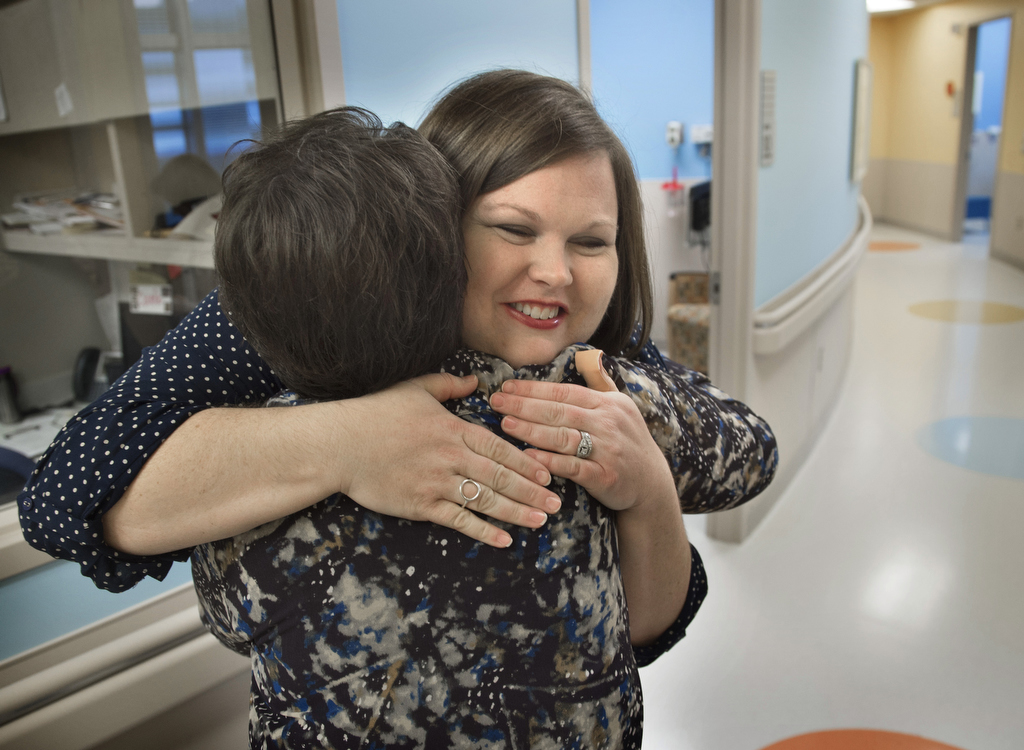
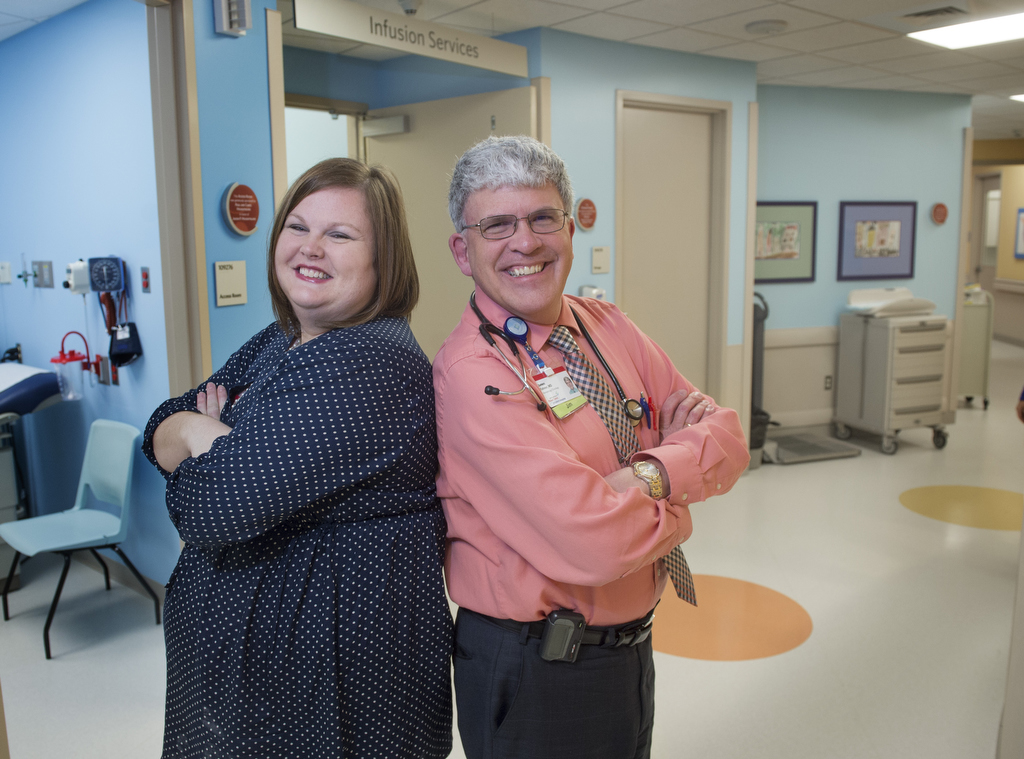
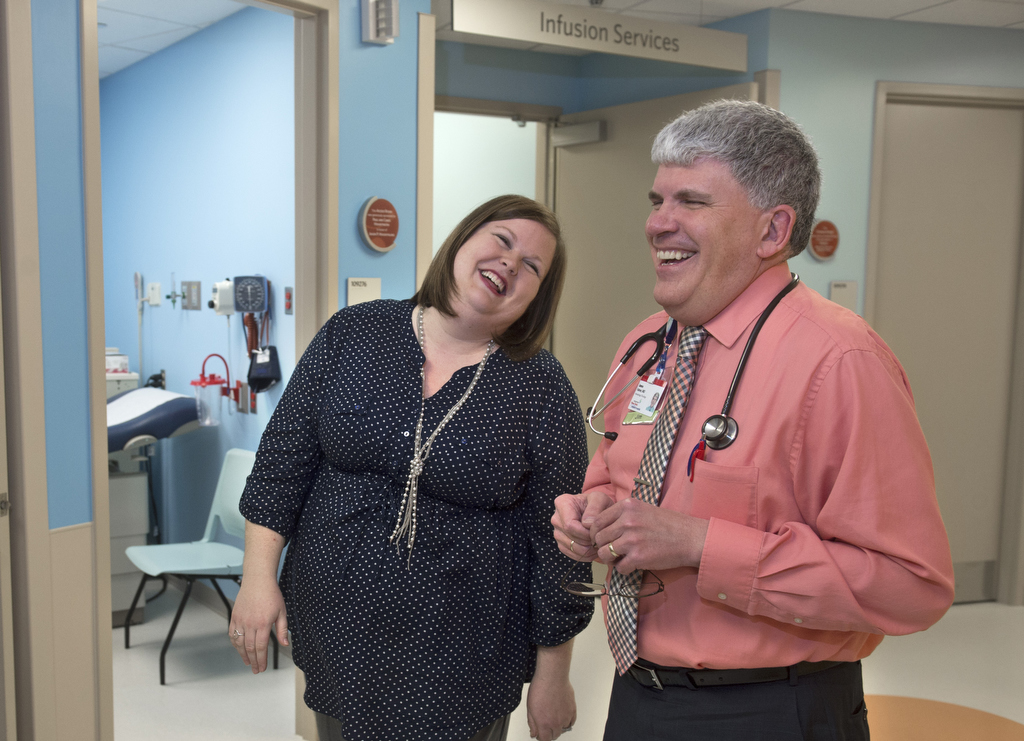

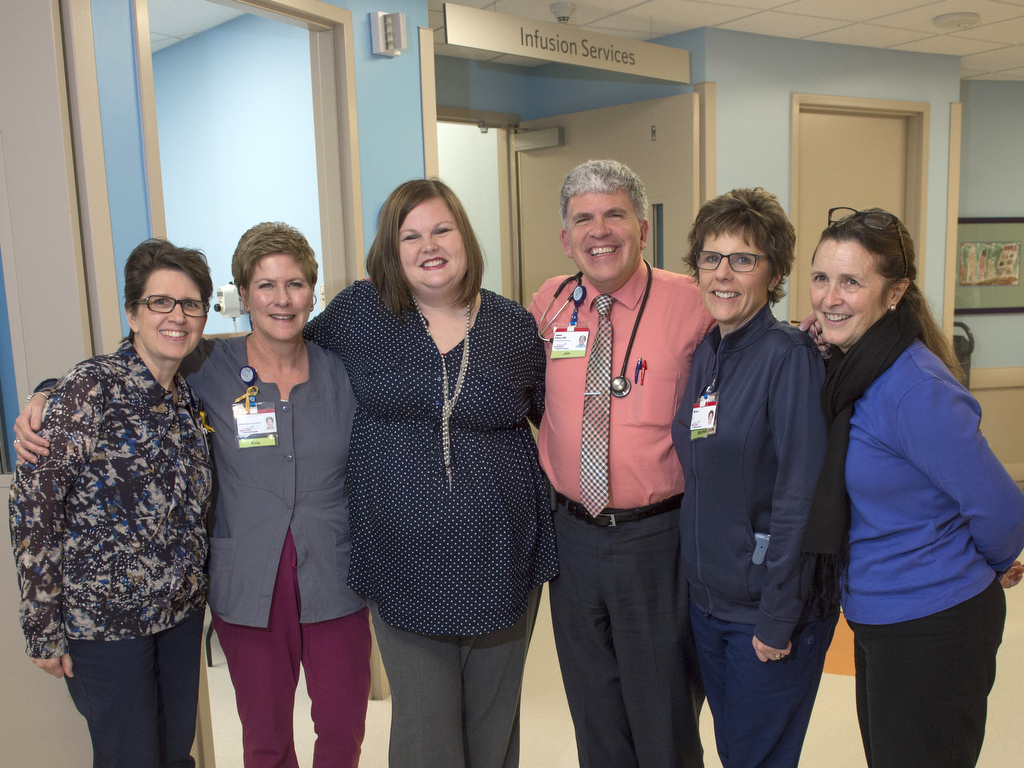
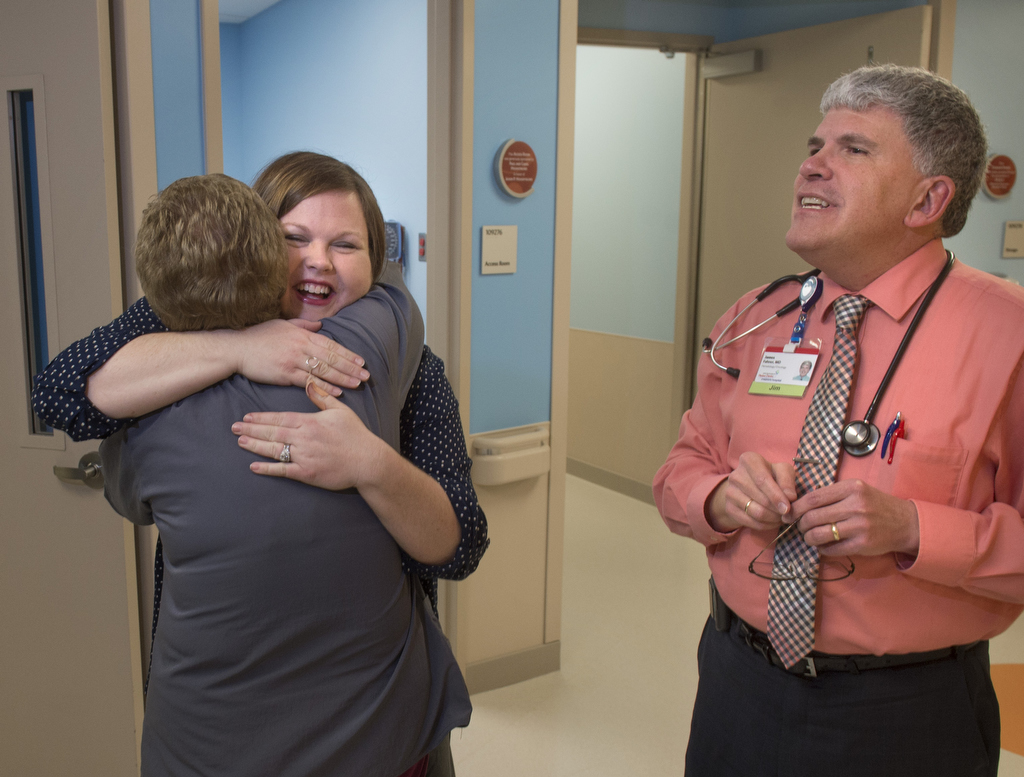

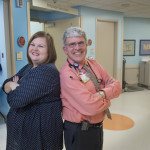




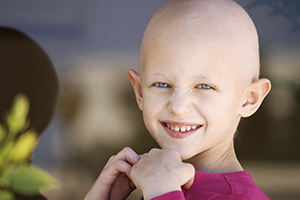 /a>
/a>
 /a>
/a>
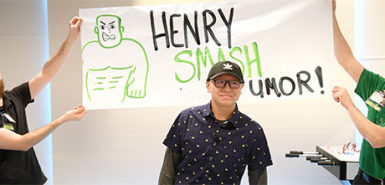 /a>
/a>